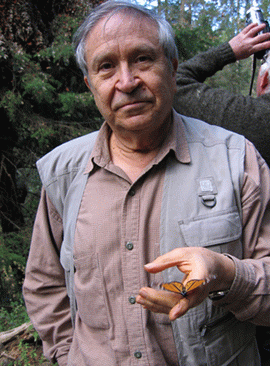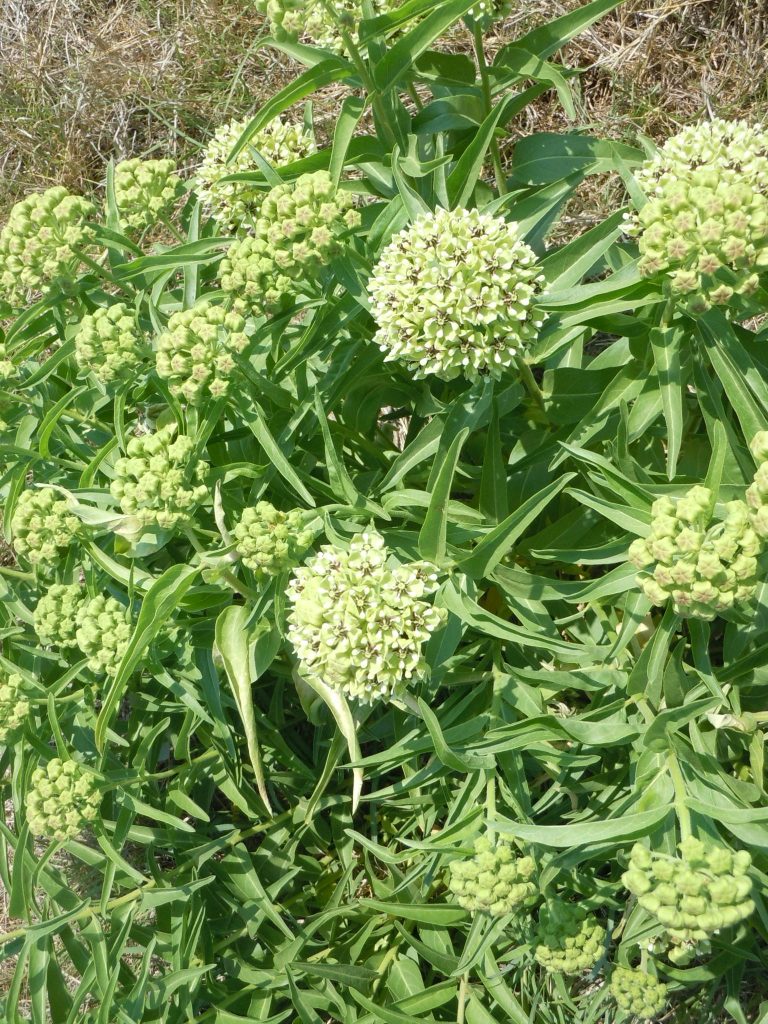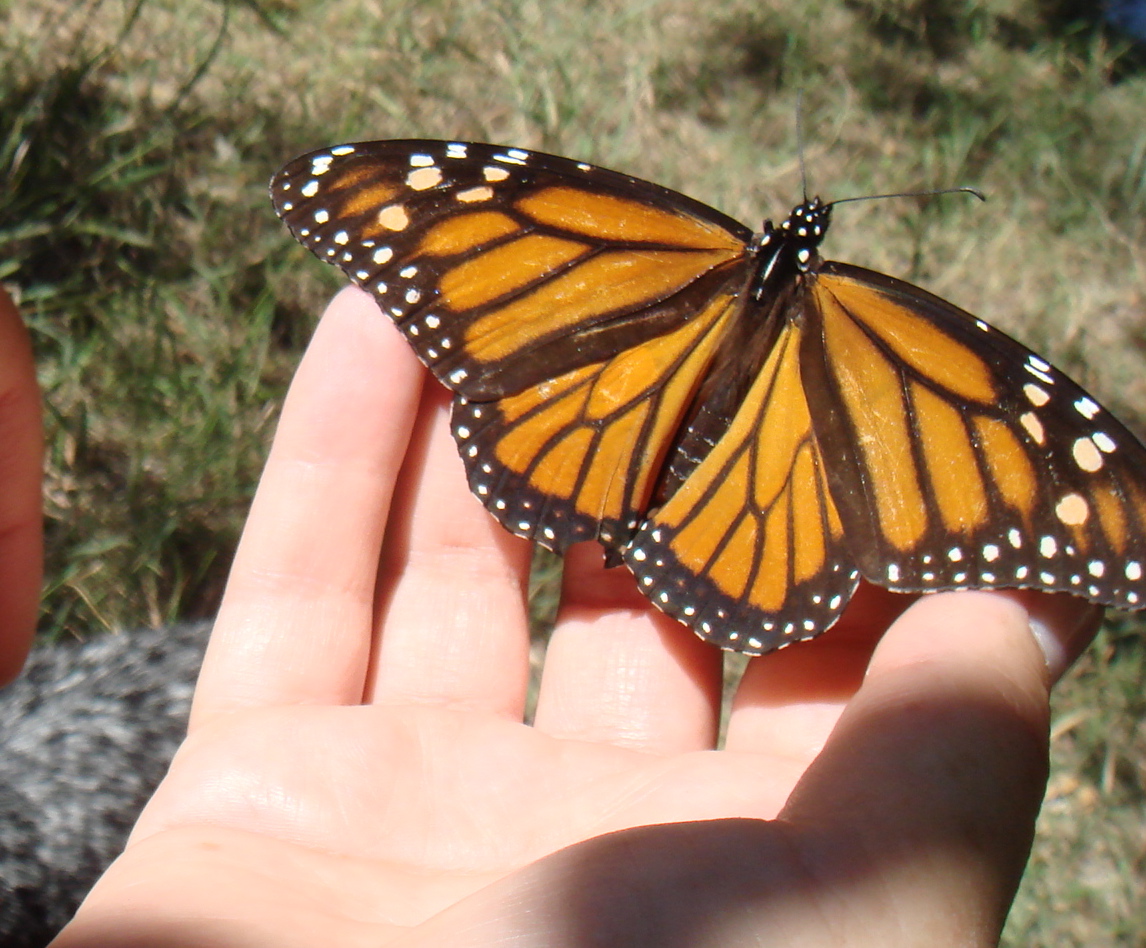President Barack Obama, President Enrique Peña Nieto of Mexico and Prime Minister Stephen Harper of Canada will gather Wednesday in the Mexican city of Toluca, only 75 miles from the ancestral roosting sites of Monarch butterflies in the mountains of Mexico.
According th the White House, the three leaders will discuss a range of issues important to the people of North America.
OK, but will they discuss what can be done to ensure the future of the epic Monarch butterfly migration, a unique natural phenomenon that binds our three countries geographically, spiritually and scientifically?

President Barack Obama will meet with the presidents of Canada and Mexico just 75 miles from the Monarch butterfly roosting sites. Will they talk Monarch butterflies?
Ever since the news broke in January that this year’s migrating Monarch butterfly population plunged to historically low numbers and scientists suggested that the migration may soon become extinct, Monarch and pollinator advocates have been energized, seeking solutions to the decline. Most suggestions have take the form of encouraging the planting of more milkweed and resisting genetically modified crops and pesticide use. But two groups, the Mexico-based Grupo de los Cien Internacional and Make Way for Monarchs here in the U.S., have banded together to form the Milkweed-Butterfly Recovery Alliance to take a political approach.
Led by Mexican poet, environmentalist and human rights activist Homero Aridjis, Monarch butterfly expert Dr. Lincoln Brower and Dr. Gary Paul Nabhan, the group of artists, intellectuals and scientists, wrote a letter to the three presidents beseeching them to work together for cross-continent solutions to restoring milkweed habitat. More than 160 scientists, conservationists, artists, naturalists and others signed the letter, which encouraged planting milkweed on roadsides and between fields, and suggested subsidies for farmers to set aside land that is free of herbicides.

Mexican poet/activist/enviornmentalist Homero Aridjis helped craft a letter to the three presidents of North America. Courtesy photo
The group cites the recent dramatic declines documented at the overwintering roosts in Michoacán–from a 20-year average of about 16.5 acres to this year’s record low of 1.65 acres. That’s a 90% decrease.
The letter correctly assigns blame to illegal logging and habitat destruction at the roosting sights in Mexico, but also points the finger at atrocious agricultural policies in the United States. Among those pollinator-unfriendly policies: the approval of pesticides that are known to poison pollinators and the practice of wholesale spraying of herbicides on genetically modified corn and soybean crops immune to their toxins. Where fertile wildflowers, including the Monarch host plant milkweed, once flourished between the rows and on the fringes of farmland, now sterile space exists. Who knows what else is being eliminated.
In addition, the 2007 Renewable Fuel Standard mandated that a rising percentage of domestic gasoline be made from biofuels such as corn-based ethanol. The economic incentives for planting corn to produce ethanol have caused farmers to expand the ubiquitous starch to cover 97 million acres of farmland in 2013, up from 78 million acres in 2006. “Fallow fields, row crops and roadsides that used to support the growth of milkweed and substantial acreage of land previously set aside in the U.S. Conservation Reserve Program have been converted to monoculture crops,” the letter notes.

It’s all about the milkweed–and a lack thereof. Asclepias asperula, Antelope Horns Milkweed on Texas Hill Country roadside in April 2011. Photo by Monika Maeckle
The alliance suggests the very reasonable notion of managing roadsides for native plants, including milkweeds and more extensive buffers of native plant communities at field margins. “A milkweed corridor stretching along the entire migratory route of the Monarch butterfly through our three countries must be established,” the letter states.
“This is a viable proposal. It is not impossible,” Aridjis told the the New York Times. “Otherwise, we face an ecological genocide, because if we take away the monarchs’ plants, we kill the monarchs.”
What an outrageous shame that would be. Thiseloquent essay written by Carter Roberts and Omar Vidal on the CNN website calls on the spirit of the North American Free Trade Agreement and the countries of our hemisphere working together for our greater good to literally spare common ground that might save the Monarch migration.
More posts like this:
- Wake-Up Call: AS Monarch Butterfly Numbers Plummet will Migration Become Extinct?
- On the Llano River: Thunderstorms Stall Monarch Migration
- How to tag Monarch Butterflies
- Founder of the Monarch Roosting Spots Lives a Quiet Life in Austin, Texas
- Monarch Butterflies: the Panda Bears of Climate Change?
- Tracking the Monarch Migration from Your Desk
- A Year in the Life of a Mostly Native Urban Butterfly Garden
- As the Earth Heats Up, What Does it Mean for Monarch and other Migrating Butterflies?
- Monarch migration stories on the Texas Butterfly Ranch
Like what you’re reading? Don’t miss a single post from the Texas Butterfly Ranch. Sign up for email delivery, like us on Facebook, or follow us on Twitter, @monikam.


This is your best post ever, Monika! I would love to organize a poetry reading/political outcry for the Monarchs — you interested?
Let’s do it!
we are giving away milkweed seeds and plants and educating next weekend at both our austin farmers markets. Please come help get the word out.
Which farmers markets in Austin?
Would it be great to have large nations look at one of the worlds most incredible inhabitants? We need to see the small things in the world safe for generations to come. Thank you Monica for keeping us in the know.